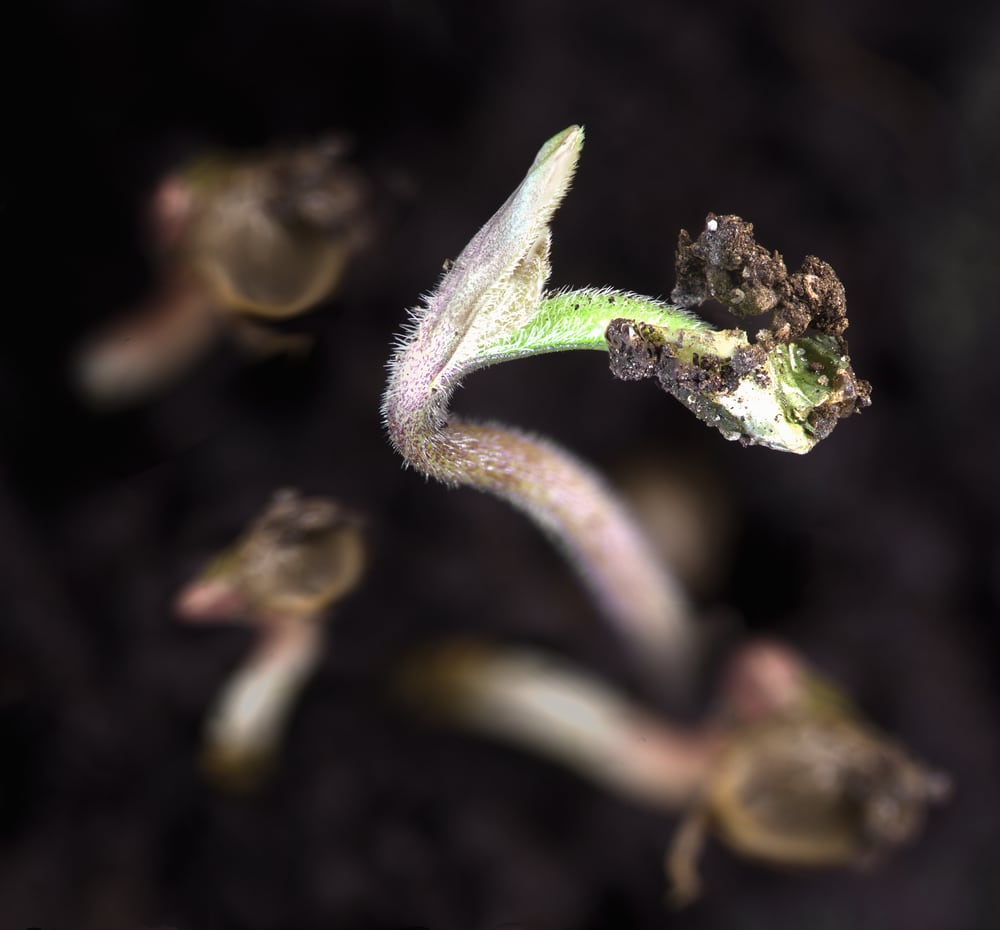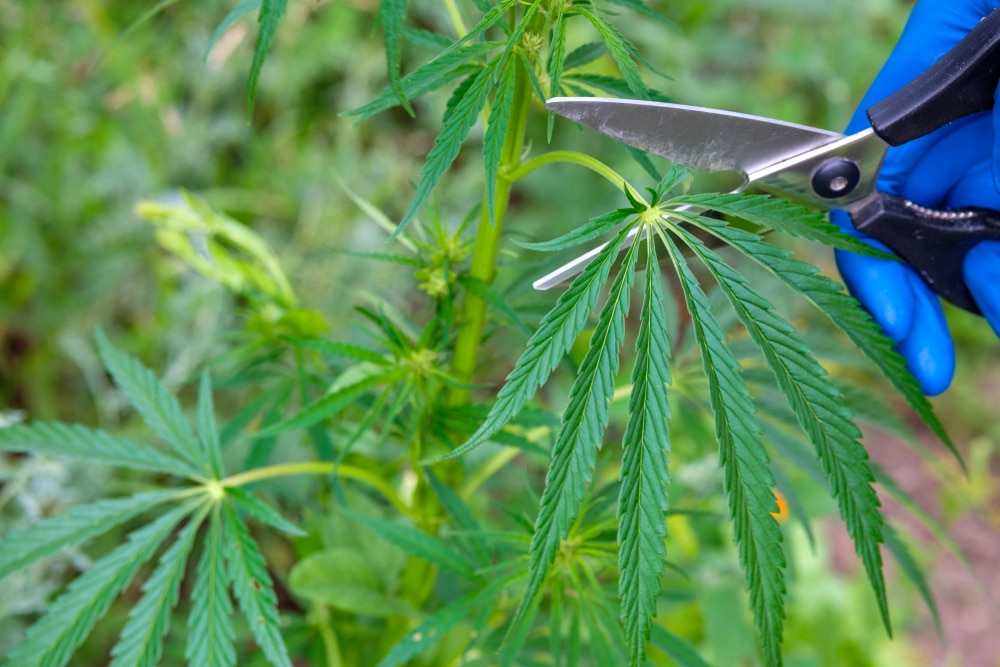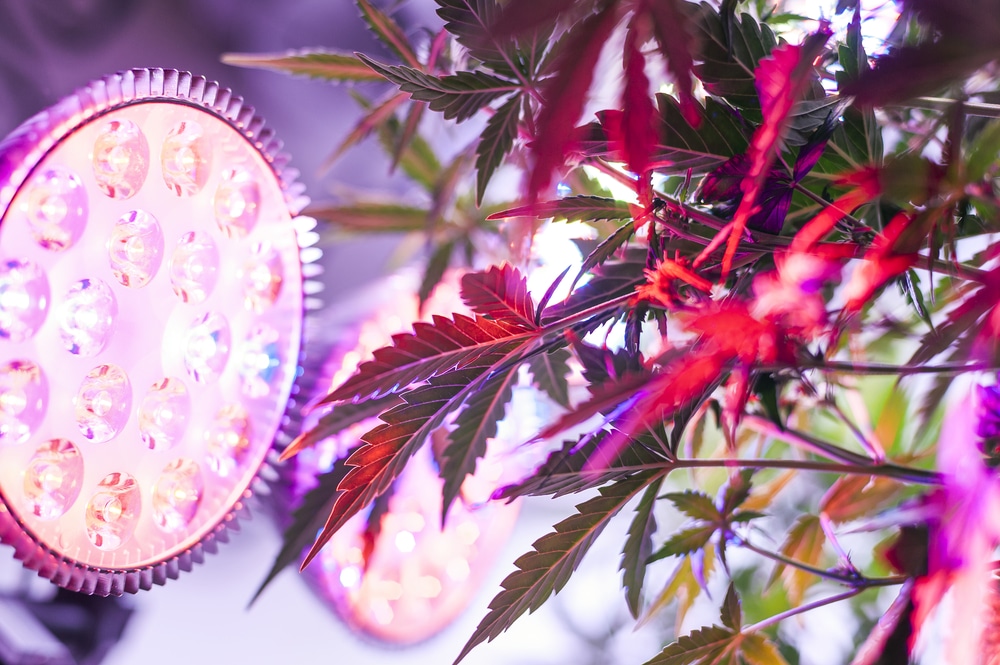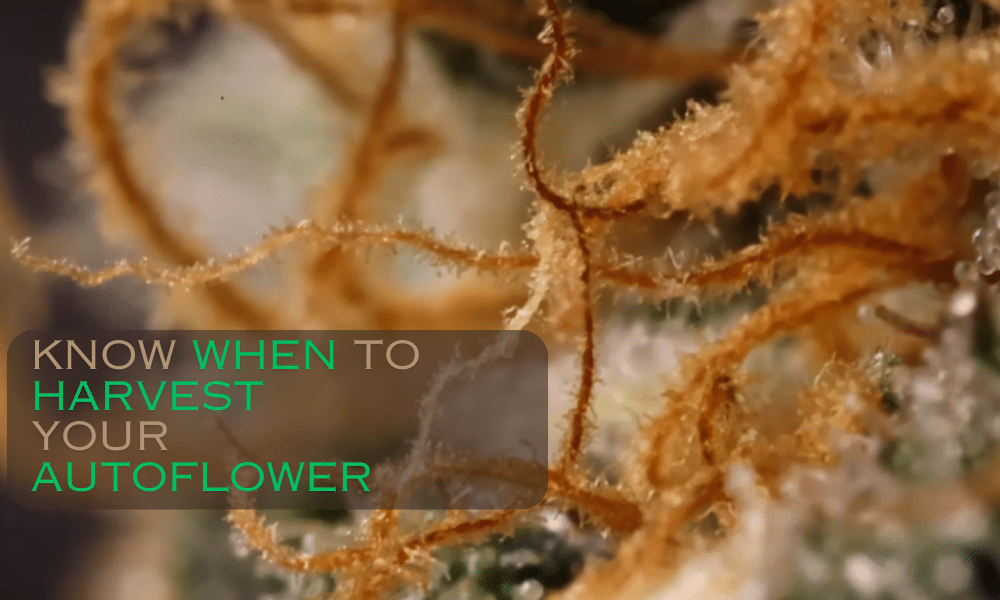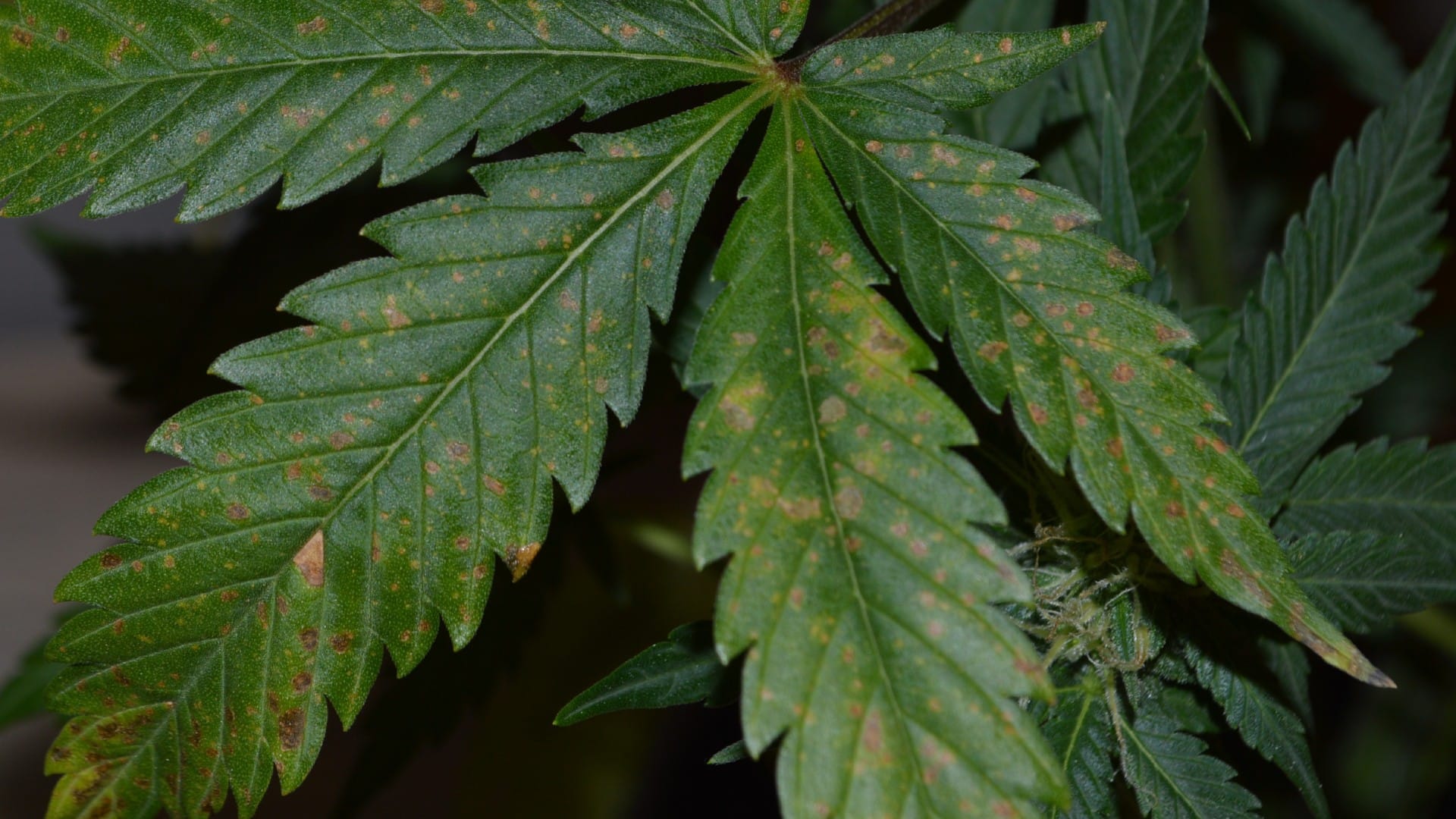No products in the cart.
Marijuana Education
How to Germinate a Marijuana Seed
Successful marijuana cultivation starts with knowing how to germinate a marijuana seed. This process helps create healthy young seedlings.
There are several methods to germinate a cannabis seed. Each strategy uses varying approaches to nurture seeds to maturity.
Whether you’re an indoor or outdoor grower, our germination guide provides detailed steps. Uncover the best way to start the lives of your weed plants.
Let’s dive in.
The critical role of germination in cannabis cultivation
Germination introduces a cannabis seed into a fertile environment. The seed comes out of its shell and turns into a seedling. This process occurs in the presence of oxygen, water, and suitable climatic conditions.
Seed germination is the first step to growing a weed plant. Without it, it’s impossible to cultivate cannabis crops.
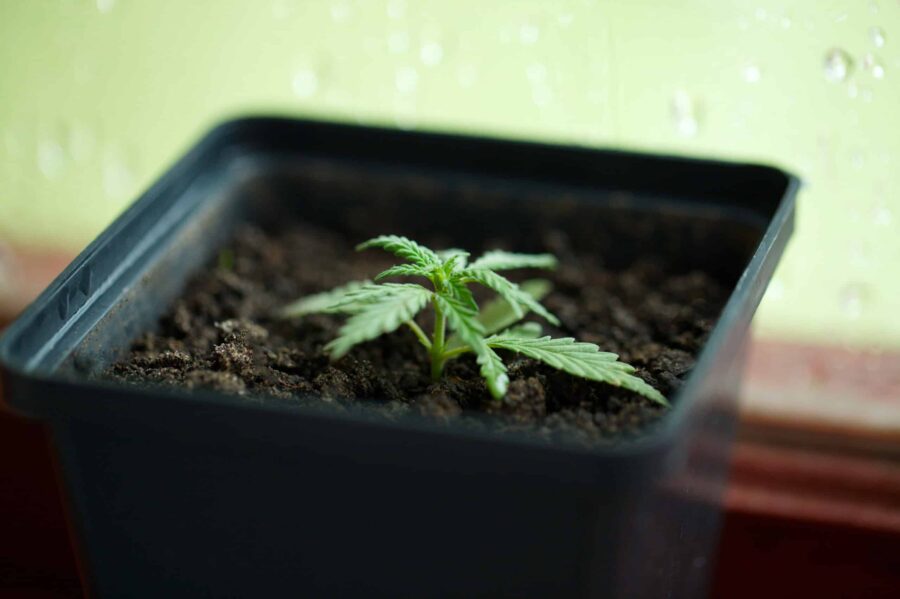
Understanding the life cycle of a cannabis plant
The cannabis life cycle is divided into different phases. Each one plays a role in overall plant development. Here are the primary stages:
- Germination stage. The first phase lasts for 2–14 days. Exposing the seed to an ideal environment stimulates its growth. Transplant it to the final medium once it sprouts.
- Seedling stage. In this state, a seedling comes out of the soil and develops its first leaves. The cotyledons shoot out from the stem and the top of the plant. The young cannabis crop also starts developing its root system. It stays in this phase for about 2–3 weeks.
- Vegetative stage. Your young weed plant shows tremendous development in the third phase. As it grows taller and bigger, its foliage also increases. Various sexual characteristics appear, ensuring easy gender identification.
Get the most from the vegetative phase by optimizing the temperature, humidity, and lighting requirements to your plants’ needs. The stage lasts for about 4–8 weeks but can be as long as 16 weeks.
- Flowering stage. The duration of this phase is around 6–8 weeks, although some strains bloom for longer. A change in the light cycle signals the beginning of flowering for photoperiods. As physical growth stops, the cannabis plants focus on producing flowers.
During the budding phase, cannabis plants need 12 hours of darkness daily. They also require consistent temperatures and a change in nutrition.
- Harvesting stage. Determine if your plants are ready for harvest with visual inspections. Look for brown pistils and changes in trichome and leaf color. A magnifying tool also aids the process.
After harvesting, prune dry, and cure your plants.
After growing marijuana from seeds, your plants are ready for consumption.
Importance of successful germination
Learning how to germinate marijuana seeds is fundamental to cannabis cultivation. The process creates cannabis plants that produce buds and other valuable components. It helps you control the crop quality as you determine what seeds to grow.
Getting to know your cannabis seeds
It’s vital to familiarize yourself with the ins and outs of marijuana seeds. Let’s explore the basics of these specimens.
Types of cannabis seeds
There are various types of cannabis seeds. Although they’re all suitable for cultivation, some offer different advantages.
Regular, feminized, and autoflowering seeds
There are three types of weed seeds:
- Regular cannabis seeds: These photoperiod seeds have a 50% chance of producing male or female plants. Hermaphrodites may also emerge from them. They’re the best choice for creating new weed strains.
Since regular cannabis seeds produce males, they may cause unwanted flower fertilization. As a result, many growers don’t use them when trying to make buds.
- Feminized cannabis seeds: Breeders produce these photoperiod seeds by crossing two female plants. They use numerous methods to make females create pollen sacs for fertilization.
After germination, they have a 99% chance of developing into females. Feminized cannabis seeds are an excellent option if you’re after high-quality buds. They produce premium yields of flower-bearing plants.
- Autoflowering cannabis seeds: These non-photoperiod seeds are engineered to flower without a light cycle change. These plants appear small and compact and are often feminized.
Autoflowering cannabis seeds are easier to grow because of their genetic modifications. They reach maturity fast and are more suitable for beginners.
Choosing the right type of seed for your grow
All types of marijuana seeds are a good choice for your grow. Think about what you want to achieve before selecting a seed.
Go for regular seeds if you want to create a new marijuana strain. Choose feminized seeds for high-yielding plants. Pick autoflower seeds if you’re new to cannabis cultivation or want fast-growing varieties.
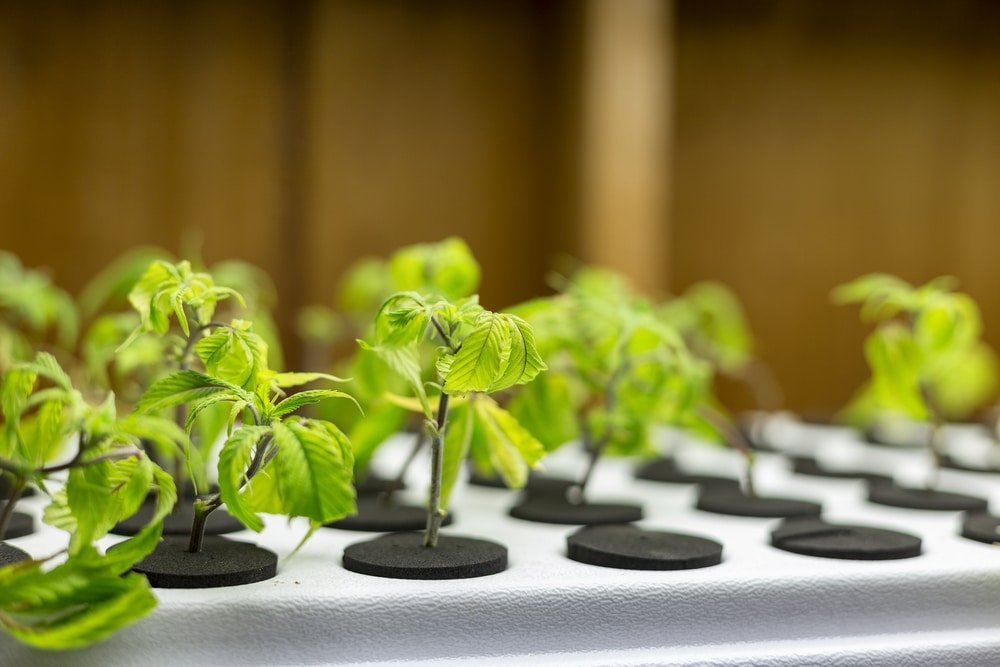
Assessing seed quality
The success of seed germination relies heavily on its quality. Evaluate various seeds and select a premium one with desirable characteristics.
Identifying healthy vs. unhealthy seeds
Only healthy seeds produce great yields. Identify the quality of a seed by examining its look. Its color and shape can tell you more about its well-being.
Here are the signs of healthy and unhealthy seeds:
- Color. A healthy seed appears black, brown, or gray and features darker spots. The hue may be uniform or have patterns like stripes. Genetics, storage, and environmental factors determine the specific color. A good seed comes with a waxy coat that could reflect light after exposure.
An unhealthy seed is either white or green. The coloration usually comes from a premature harvest. It may also have a faded and dull look.
- Shape. A typical healthy weed seed has a tear-drop shape. One of its ends is conical, whereas the other is round.
An unhealthy seed has an irregular shape and size. It could be deformed, flat, or have other inconsistent appearances.
- Age. The younger a cannabis seed, the healthier it is. It germinates faster and has a higher chance of producing abundant plants. Older weed seeds have a soft texture and crack after experiencing pressure. They often struggle to germinate and produce low-quality weed crops.
It’s difficult to tell the age of a seed by merely looking at it. Focus on other factors to determine the health of your seed.
Some growers use the size to identify the quality of marijuana seeds. This technique is unreliable, especially if you’re a beginner.
Use the float test to distinguish good seeds from unhealthy ones. Put your seeds in a glass jar filled with water. Wait for at least one hour before checking them. While viable seeds sink to the bottom, bad ones float on the surface.
We only recommend the float test if you’re ready to germinate your seeds. The seeds absorb water after sinking, and this activates their membranes for germination.
Proper storage conditions for cannabis seeds
While preparing for germination, learn how to store marijuana seeds. Keep them in a dark, cool, and dry place with stable environmental conditions. A drawer or cupboard is a wonderful choice for storing seeds.
A fridge is another great option, as it has proper storage conditions. Don’t open the appliance too frequently to prevent temperature and humidity disruptions.
How to germinate a marijuana seed
There are several methods for germinating marijuana seeds. While some strategies are traditional, others are relatively new. Explore different ways to bring your seeds to life.
The paper towel method
This easy and reliable method uses damp paper towels to make the seeds moist. They sprout in the right conditions.
A step-by-step guide to the paper towel method
Get the following materials:
- Paper towels
- Water
- Two plates
Once you have these items, follow these steps to germinate your seeds:
- Spread one paper towel on a plate.
- Place the seeds on top of the towel and spray room-temperature water on it.
- Enclose them with another damp paper towel and plate and keep them in a dark and warm room.
- Add more water daily to make the seeds moist, but avoid overwatering them.
- Your seeds have successfully sprouted when you notice a taproot.
The whole process usually takes around 1–5 days.
Benefits and potential downsides of the paper towel method
Many marijuana cultivators choose the paper towel method because of its benefits. The pros of this technique include:
- Fast germination
- High success rate
- Less space requirement
- Easy to monitor the germinating seeds
The main downside is that it requires several steps and regular seed monitoring.
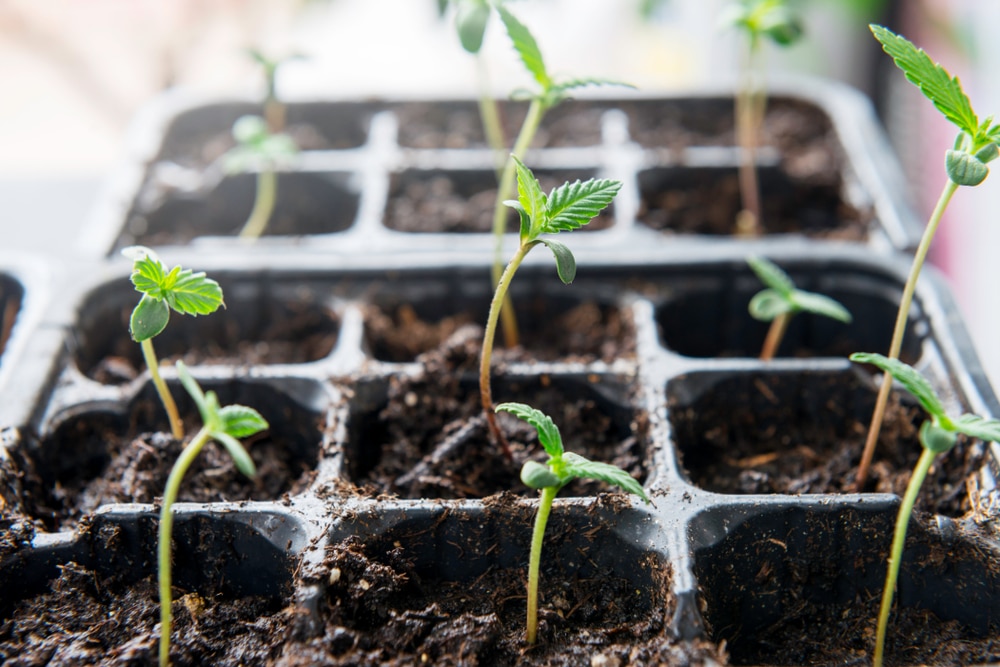
Direct soil germination method
This simple strategy allows you to plant the seeds directly into the soil. It doesn’t need any additional supplies.
Instructions for direct soil germination
Are you set to learn how to germinate a marijuana seed with this method? Prepare a germination tray or plant pot and fill it with fresh soil. Follow these steps:
- Water the soil to make it moist. Ensure it’s free of any dirt or contaminants that may affect your seeds.
- Create small holes that are about 0.5 inches deep inside the pot.
- Put a seed inside every hole and cover it with soil. Ensure the soil doesn’t put pressure on the seed.
- Spray water on the soil to make it moist. Avoid soaking it, as this mistake may cause stagnation.
The seeds come out of the soil by themselves once they become seedlings.
Why some growers choose the soil method
Some growers prefer soil germination, as it exposes the seeds to the natural environment. The seeds experience changes in light, temperature, and other elements. This method helps the plant become resilient to climatic stress and other problems.
The glass of water method
The glass of water method involves soaking your seeds in water. Although this strategy is effective for all cannabis seeds, it’s most beneficial for older ones.
Detailed guide to the water glass method
Take these steps to germinate your weed seeds with this method:
- Put your seeds inside a glass of warm water. Make sure the temperature is about 71°F.
- Check the seeds regularly to see when they develop white tips. This process takes around 3–5 days.
Evaluating the pros and cons of the glass of water method
This method features various benefits and drawbacks. The pros include:
- Easy to use
- No need for constant monitoring
- Suitable for seeds with hard shells and older ones
The downsides of this seed germination strategy include:
- Less effective than most other methods
- Excess moisture may cause seed rot
Stone wool blocks and soil plugs are other techniques for germinating cannabis seeds.
Caring for germinated seeds
After learning how to germinate a marijuana seed, life begins for your plant. Since young seeds are delicate, handle them with caution. Adhere to the best practices for planting and nurturing them.
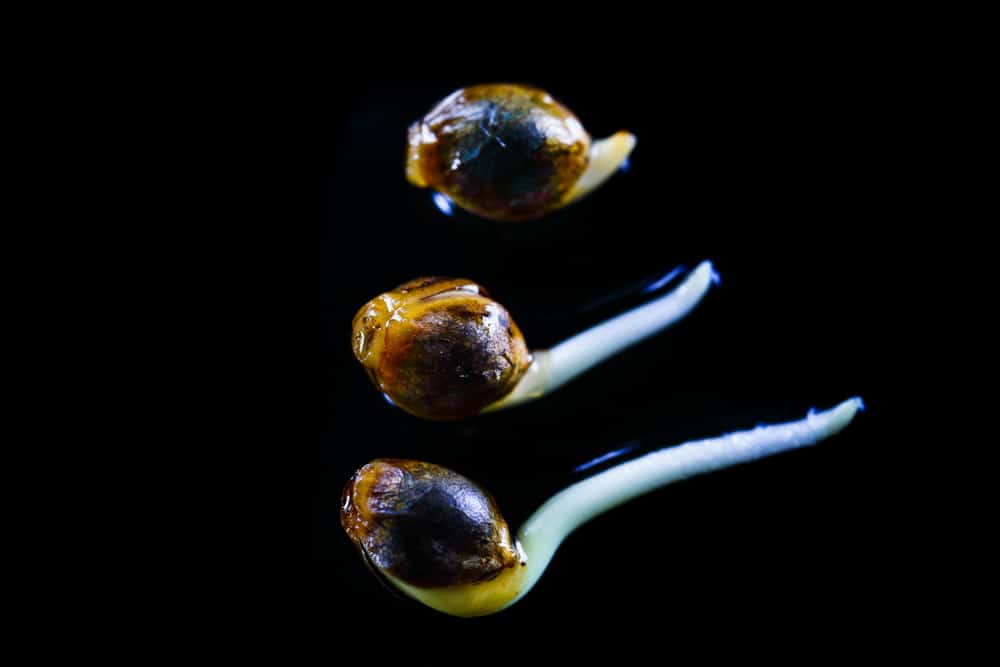
Planting germinated seeds
Once your seeds develop a taproot, they’re ready for planting. Gently take them out of the germination system and plant them in a growing medium.
How to plant germinated seeds safely
Planting germinated seeds requires tender care. Don’t rush the process, as it could stress and kill them. Wait for a few hours after seeing the taproot before transferring the seedlings, then follow these steps:
- Fill your plant pot with clean and nutritious soil. Choose water with a pH of around 6.0–6.5.
- Use a pencil to create small holes in the soil. Ensure each hole has a depth of about 0.5 inches.
- Place each germinated seed into a hole. We recommend using tweezers to avoid touching the root.
- Cover each seed and its taproot with soil. Make sure the soil doesn’t put excess weight on the plant.
- Spray a small quantity of water on the plant and soil.
Don’t introduce foreign materials or harmful microbes to the soil during planting.
Avoiding common planting mistakes
While planting cannabis seedlings, many growers make certain mistakes. The following errors may affect cannabis growth and yields:
- Planting too early or too late. Seedlings may struggle to develop if you plant them too early. Late transfer to a growing medium may cause rotting.
- Using unhealthy soil. Don’t grow cannabis seedlings in contaminated soil. Avoid soil without nutrients or that’s already been used for cultivation.
- Using the wrong pots. A big pot could lead to root rot or overwatering. Your seedlings may experience stunted growth if the growing medium is too small.
- Covering the plant with too much soil. This mistake may choke the seedlings, preventing them from sprouting.
- Carefree handling. Planting young and fragile plants without caution may damage them.
- Poor water quality. Ensure the water pH is ideal for plant growth. Make sure it’s clean and doesn’t have harmful microorganisms.
Providing optimal care for seedlings
After planting your seedlings, nurture them to achieve optimal growth. Focus on offering the ideal nutrition, lighting, and environmental conditions.
Light, water, and nutrient needs of cannabis seedlings
Marijuana seedlings require 18 hours of light per day to grow optimally. Some growers provide up to 24 hours of illumination during this stage. We recommend LED grow lamps with enough blue light content for seedlings.
Water them two times per day. Around seven ounces of liquid is enough each time.
Seedlings don’t need too much fertilizer during the first week of their lives. They get their nutrients from the cotyledons. Supply them with a small quantity of nitrogen, phosphorus, and potassium after a week.
Maintaining the right temperature and humidity for seedlings
Grow weed seedlings at a relative humidity of about 65–80%. Keep the temperature at 70–85°F when the light is on. Once it’s dark, reduce it to 65–80°F to guarantee optimal development.
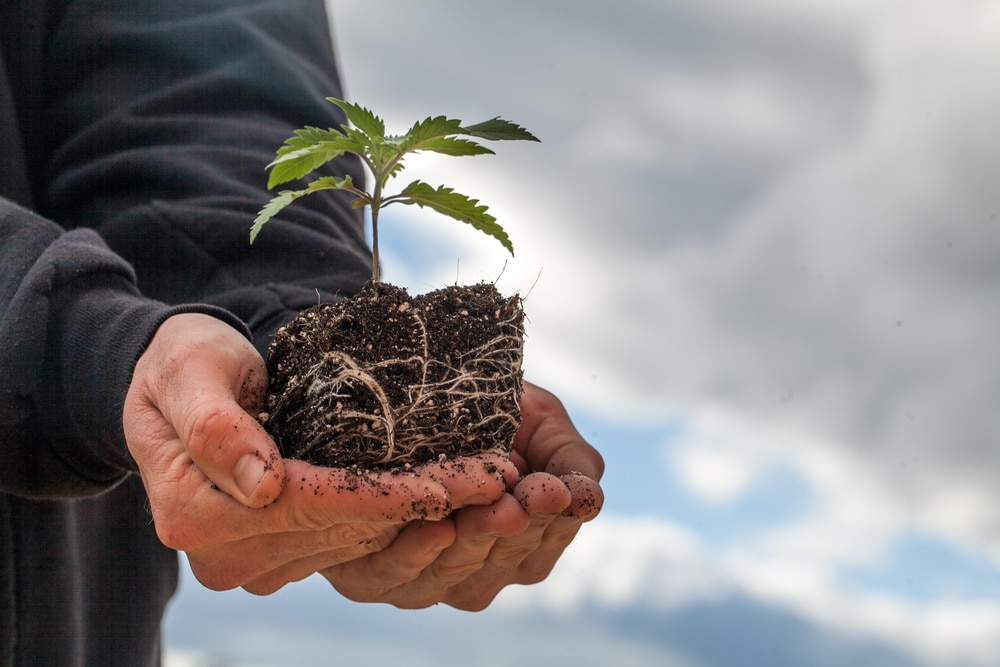
Troubleshooting common germination issues
Do you have issues with germinating your marijuana seeds? Find the cause of the problem and solve it immediately.
Dealing with seeds that don’t germinate
Every cannabis seed has to germinate within a particular time frame. Your seeds may have problems if germination doesn’t occur on time. Figure out the cause and explore various solutions.
Common reasons why seeds don’t germinate
Several factors may prevent seeds from germinating. The most common reasons include:
- Bad genetics
- Poor storage
- Too little or too much moisture
- Contamination from harmful pathogens when touching them with bare hands
- Putting seeds inside holes that are too shallow or too deep
- Using old, dirty, or unsterilized pots or soil
- Soaking seeds in water for too long
- Temperature levels that are too high or too low
- Exposure to insects, birds, and pests
- Using contaminated water
- Germinating too many seeds inside a pot
These problems may make the seeds die or rot if you don’t treat them fast enough.
How to encourage germination in stubborn seeds
Have you identified the source of the issue? Explore different means to make stubborn seeds germinate:
- Introduce microbes. Beneficial bacteria promote root development and germination. These microorganisms soften the shell and add more nutrients to the seeds.
- Place the seeds inside hydrogen peroxide. This solution makes the shell softer, allowing the taproot to come out.
- Soak the seeds in carbonated water. This solution contains carbon dioxide, a compound that softens the shell. Carbonated water may help taproots emerge from the stubborn seeds.
Are you still unable to germinate your seeds? Use sandpaper to scrape the seeds’ outer shells. Another method involves using your thumbnails to crack each seed manually. These two techniques are the last resort, as they may destroy the seeds.
Addressing early seedling problems
As your seed becomes a seedling, it may encounter some challenges. Deal with the problems immediately, or they may worsen.
Identifying and treating common seedling diseases
As seedlings grow, they may experience some diseases. The most common ones are:
- Powdery mildew. This condition causes small spots and changes the leaves to brown or yellow.
- Downy mildew. Unfavorable humidity and temperature are the primary causes of this problem. Downy mildew causes the appearance of gray, pale, or yellow spots on the leaves.
- Pythium wilt. This fungal disease attacks the roots and makes the seedlings crumble.
- Root rot. Parasitic oomycetes, fungi, and bacteria are the culprits behind this condition. The roots change color to dark brown and become slimmer. Stunted growth and withered leaves also accompany the issue.
Correcting nutrient imbalances in seedlings
Cannabis seedlings get nutrients from the cotyledons, tiny leaves formed in the seeds. After the first week, supply your plants with micronutrients and macronutrients.
Provide nitrogen, potassium, phosphorus, magnesium, calcium, and sulfur to your seedlings. Make sure the nutrients aren’t too much or too little for the plants.
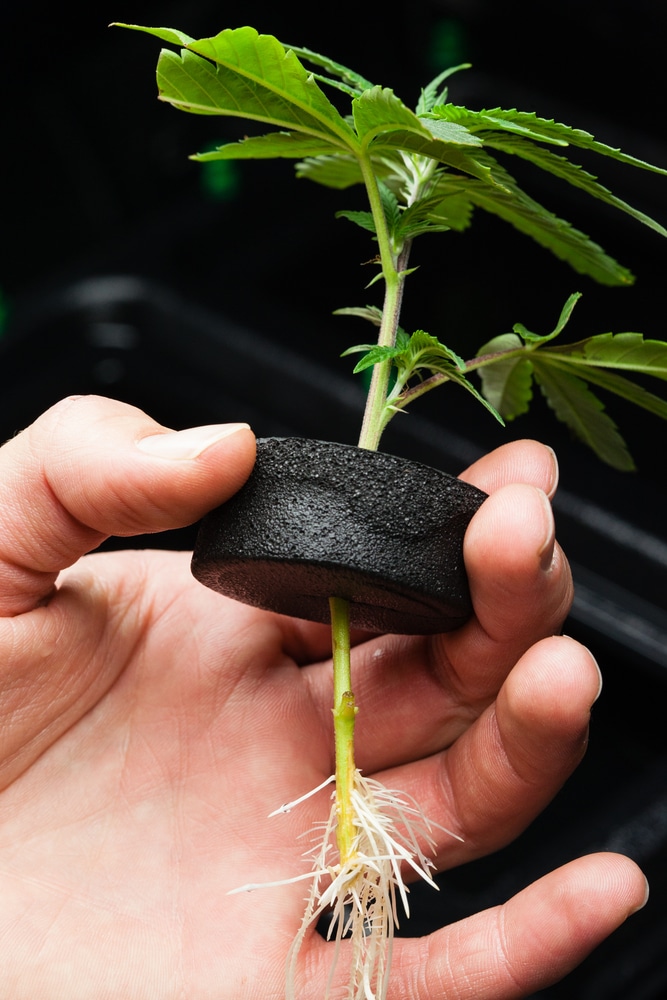
Germinate a marijuana seed like a pro
Use our expert guide to master how to germinate a marijuana seed. Note the importance of germination in marijuana cultivation and develop your seeds successfully.
Perfecting the art of germinating marijuana seeds
To germinate cannabis seeds successfully, get the lighting, temperature, and humidity right. Explore various germination methods and choose the best option for your plants. Care for your young crops as they continue developing.
The value of patience and close observation
Marijuana germination takes time, so don’t rush through the process. Allow the seeds to develop properly before transferring them to your growing medium.
As the young plants develop, pay attention to their needs. Provide nutrients and ensure the environmental conditions are suitable. Apply tips for watering cannabis seedlings.
Learning from mistakes in the germination process
Mistakes are bound to happen during germination, especially if you’re a newbie. Correct your blunders and continue learning from them. Treat common diseases and fix seedling problems as soon as possible.
Additional resources for cannabis germination
Continuous learning is a common trait of great cannabis growers. Look for additional resources to understand how to germinate marijuana seeds.
Recommended books and online guides
Read the following books and online guides to master seed germination:
- Seed to Seedling: A Comprehensive Guide
- The Essential Cannabis Book: A Field Guide for the Curious
- Marijuana Horticulture: The Indoor/Outdoor Medical Grower’s Bible
Joining cannabis cultivation communities for support and knowledge sharing
Marijuana cultivation communities help you meet fellow growers. Get additional knowledge and support to optimize your plants’ development on these platforms:
Don’t waste your resources on germinating seeds with bad genetics. Get high-quality cannabis seeds from The Seed Fair and grow healthy, high-yielding plants.


